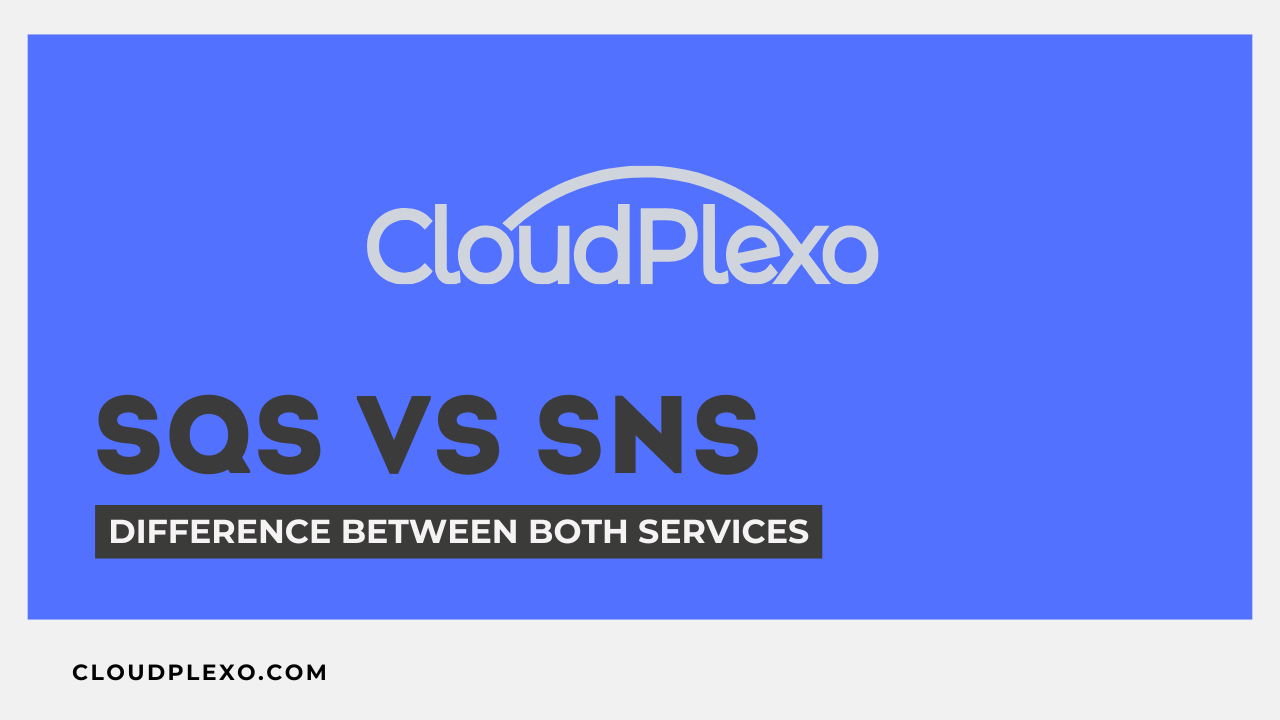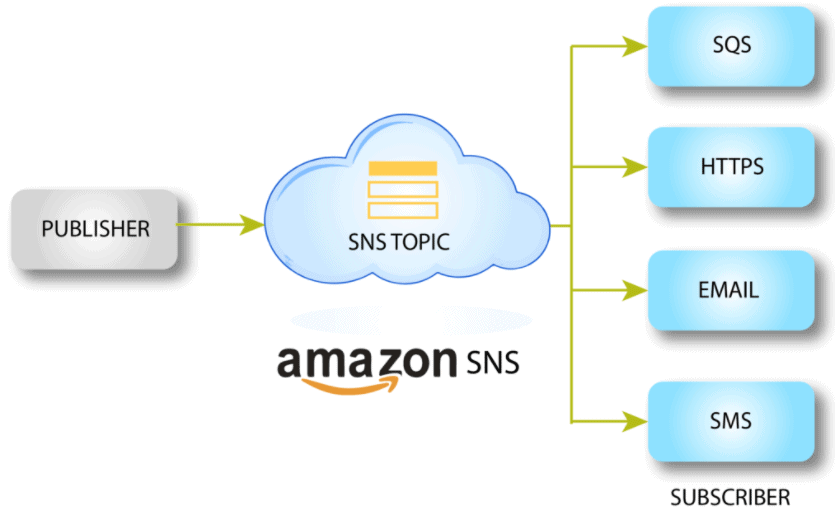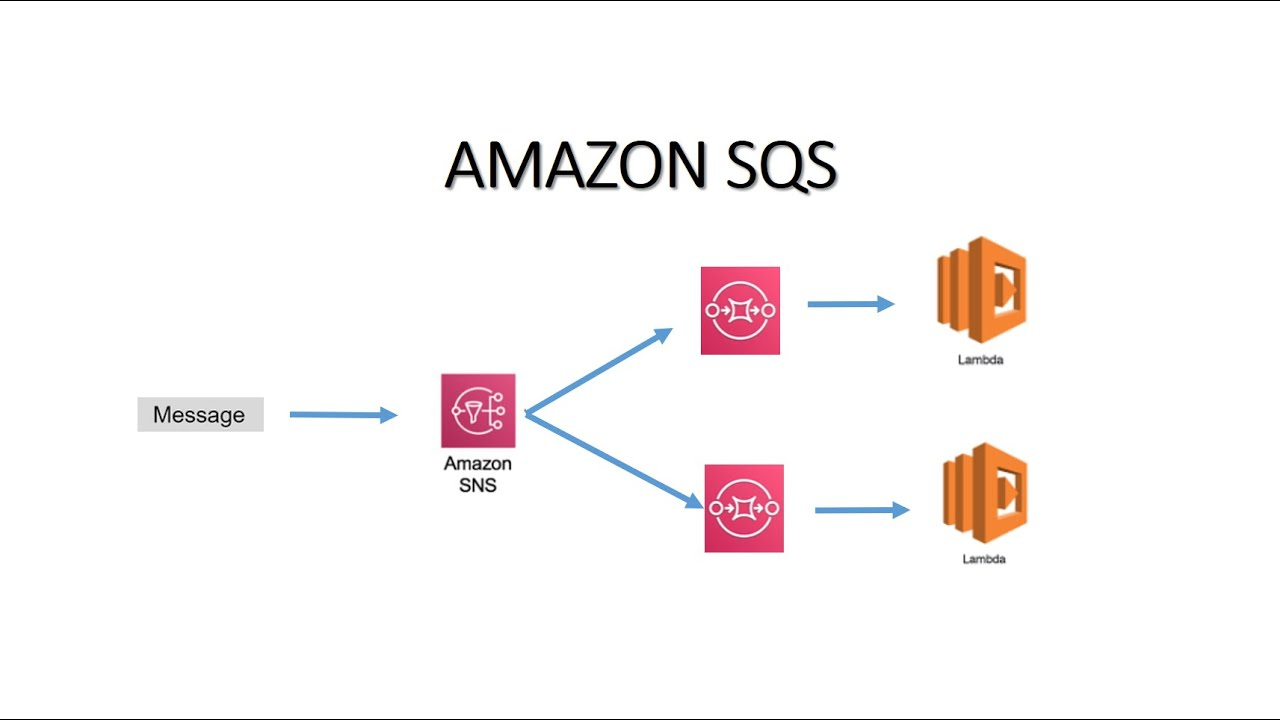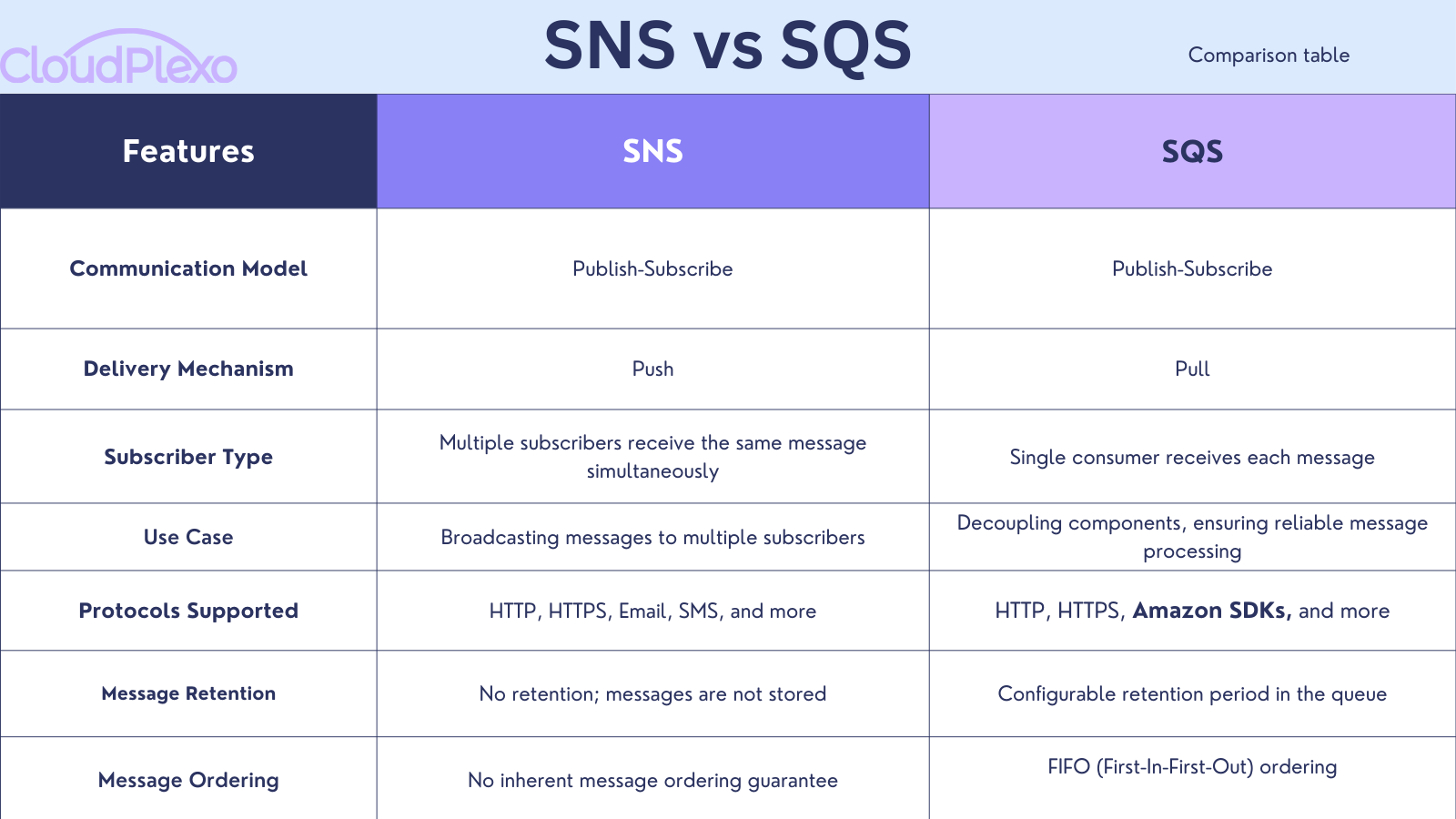Understanding the Difference Between AWS SNS and SQS
By abdulmumin yaqeen
on January 24, 2024

Introduction:
Amazon Web Services (AWS) provides a plethora of services to help businesses build scalable and reliable applications in the cloud. Two essential components for enabling communication and coordination between distributed systems are Simple Notification Service (SNS) and Simple Queue Service (SQS). Despite their similar-sounding names, SNS and SQS serve distinct purposes in the AWS ecosystem.
Simple Notification Service (SNS):

SNS is a fully managed, publish-subscribe messaging service designed to facilitate the communication of messages between different components, systems, or microservices. In simple terms, SNS acts as a broadcasting system, where messages are sent to multiple subscribers simultaneously.
Key Characteristics of SNS:
- Publish-Subscribe Model: SNS follows a publish-subscribe model, where a message (or "event") is published to a specific topic, and multiple subscribers interested in that topic receive the message.
- Push Mechanism: SNS pushes messages to subscribers in real-time. When a message is published to a topic, all subscribed endpoints immediately receive the message.
- Multiple Protocols: SNS supports various protocols, including HTTP/HTTPS, email, SMS, and more, allowing developers to choose the most suitable method for message delivery.
- Fanout Pattern: SNS excels in scenarios where the same message needs to be delivered to multiple recipients simultaneously, enabling the fanout pattern.
Simple Queue Service (SQS):

SQS, on the other hand, is a fully managed message queuing service that acts as a buffer between producers and consumers of messages. It helps decouple the components of a distributed system, ensuring that messages are reliably processed even if one part of the system is experiencing high loads or is temporarily unavailable.
Key Characteristics of SQS:
- Queue-Based Model: SQS operates on a queue-based model, where messages are sent to a queue and retrieved by consumers in a first-in, first-out (FIFO) manner.
- Pull Mechanism: Unlike SNS, SQS follows a pull mechanism. Consumers pull messages from the queue at their own pace, allowing for better control over the processing rate.
- Message Retention: SQS retains messages in the queue for a configurable period, providing a safety net for delayed or reprocessed tasks.
- Decoupling Components: SQS is ideal for decoupling the components of a system, ensuring that each part can operate independently without affecting others.
Choosing Between SNS and SQS:

The choice between SNS and SQS depends on the specific requirements of your application. If you need to broadcast the same message to multiple subscribers simultaneously, SNS is the preferred choice. On the other hand, if you want to decouple components, ensure reliable message processing, and manage message order, SQS is the better option.
Conclusion:
In summary, while SNS and SQS both play crucial roles in facilitating communication within distributed systems, they serve different purposes. SNS is a publish-subscribe service designed for broadcasting messages to multiple subscribers, while SQS is a message queuing service that enables decoupling and reliable, ordered message processing. Understanding the distinctions between these two services is key to architecting robust and scalable AWS applications.
Continue Reading
Top Cloud Services providers in Nigeria with CloudPlexo's Innovative Solutions
Uploading and Downloading Files to/from Amazon S3 using Boto3